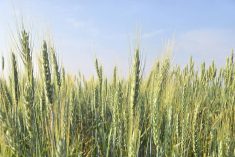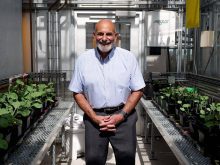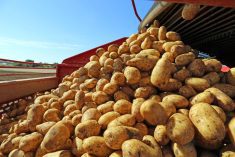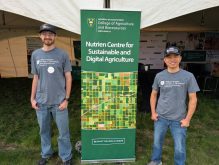A West Coast ag tech company in the crop pest control business is setting its sights on wheat leaf rust, with support from one of Canada’s five research superclusters — but not the cluster you might expect.
Out of the five federally-supported superclusters launched in early 2018, Protein Industries Canada has been most closely linked to ag research — but the new project, spearheaded by Vancouver-based Terramera, instead brings Canada’s Digital Technology Supercluster into the farming sector.
The recently-announced $6.9 million project, dubbed Precision Agriculture to Improve Crop Health, gets a Digital Technology Supercluster investment of $2.7 million, leveraging another $4.2 million in co-investment from other project partners.
Read Also
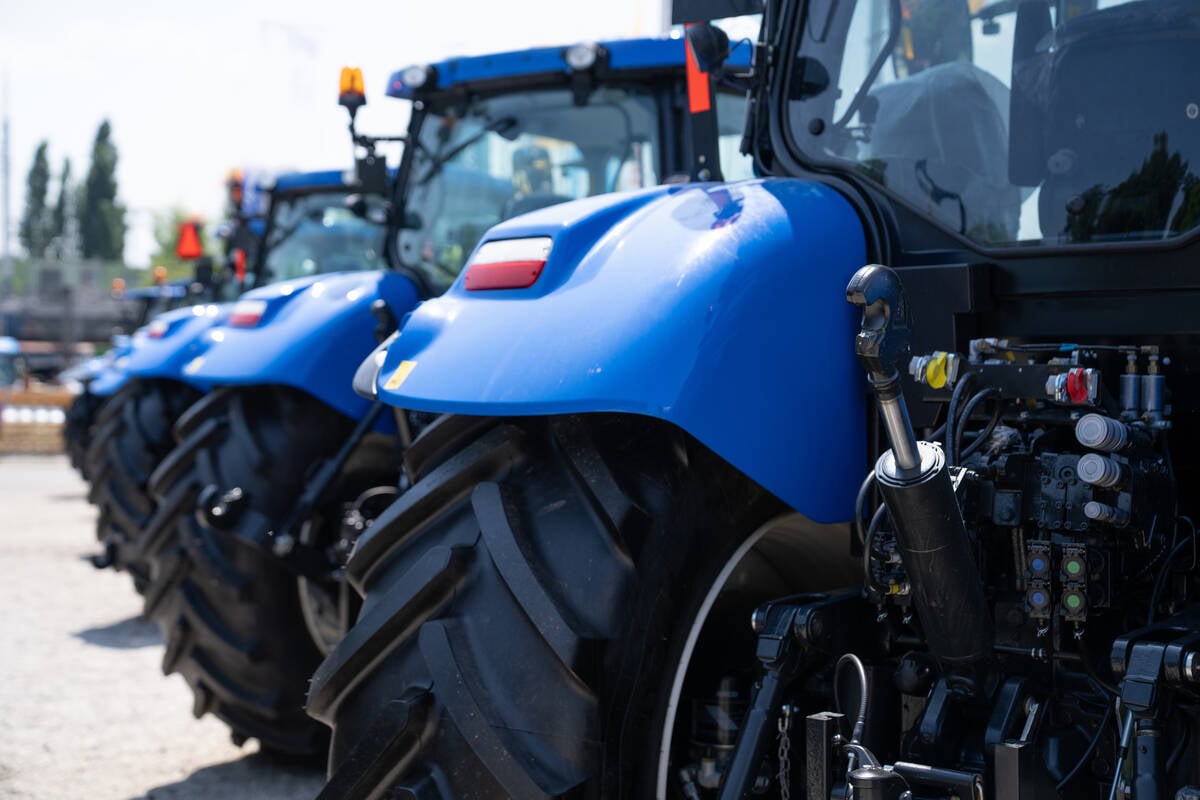
Canadian tractor sales slumped in 2025, combine purchases up
Canadian farmers have bought slightly fewer tractors this year than in 2024 while combine sales rose, statistics from the Association of Equipment Manufacturers show.
The project calls for development of new pest and pathogen controls using computational biochemistry, genomics, machine learning and robotics. Participating private- and public-sector research partners include Agriculture and Agri-Food Canada, BC Cancer Research, Canada’s Michael Smith Genome Sciences Centre, Compression.ai, Genome British Columbia, Sightline Innovation, Simon Fraser University, Trent University and the University of Saskatchewan.
The specific focus is on preventing crop loss from climate change-induced increases in pests, pathogens and viruses — and will start with wheat leaf rust.
The tech to be developed “will be used to quickly identify and test new pest management formulations and determine their ability to attack specific fungi on specific crops,” Terramera said in a release.
The platform to be developed will help design antifungal formulations and predict their effectiveness. Through machine learning, the analyses done on those formulations are expected to improve the next formulations, the project partners said.
Ag geneticist Steve Slater, Terramera’s vice-president of strategic initiatives, describes computational biochemistry as gathering the data that describe specific molecules, and bringing that data into computational models.
“We’re starting, with this program, to integrate all of that performance information with specific disease models, including the host and the pathogen that we’re working with, because we know that different diseases on different hosts are differentially responsive to fungicidal treatment,” he said in an interview.
With data in hand, “we can start integrating all of this into a big model that takes into account the genetic component of the host, the genetic component of the pathogen (and) the antifungal formulations we’re testing, and be able to then predict new ways that we can create more effective formulations.”
Terramera’s computing tools are core to the company’s work, he said — so much so that the company was one of the founding members of the Digital Technology Supercluster.
“Although there were these other (supercluster) proposals ongoing, for us it was a completely natural fit” to be part of the digital cluster, he said, specifically noting support from another co-funder, Genome B.C., which backs Terramera’s DNA and RNA sequencing work.
Another partner, Sightline Innovation, “will be providing a secure data exchange platform that enables data sharing across partners while ensuring data security throughout,” Sightline CEO Wallace Trenholm said in the partners’ release.
“We’ll also be working with the genomics team to identify chromosomal regions of both wheat and the fungal pathogen that contribute to disease progression.”
Efficacy
For its part, using a set of chemistries it calls Actigate, Terramera can take “natural” products and other fungicides “that work sort of on the margin of well enough,” and boost their efficacy to make them competitive with the synthetics on the market, Slater said.
By the same token, the Actigate system can also be used to cut the amount of synthetic fungicide needed for full efficacy against a disease outbreak, allowing for crop application rates “significantly lower than they are now.”
One of Terramera’s stated goals as a company, he said, is to reduce the synthetic pesticide load in agriculture globally by at least 80 per cent by 2030.
Actigate-based fungicides are also being developed against pathogens such as powdery mildew in crops such as cannabis, grapes and cucurbits. Terramera has also separately picked up funding from Sustainable Development Technology Canada to develop Actigate-based fungicides against other diseases in barley and oats, Slater said.
The Precision Agriculture to Improve Crop Health project’s initial focus on wheat, and wheat leaf rust, was seen as a way to “synergize” with other major research efforts already underway in Canada, he said.
How soon the team’s results can be put to work on wheat fields in a commercially viable product will depend not only on how long it takes to identify and test formulations in-house, but also on how long it takes to get regulatory approval — a process which, in Canada, can take three to five years, Slater said. — Glacier FarmMedia Network






